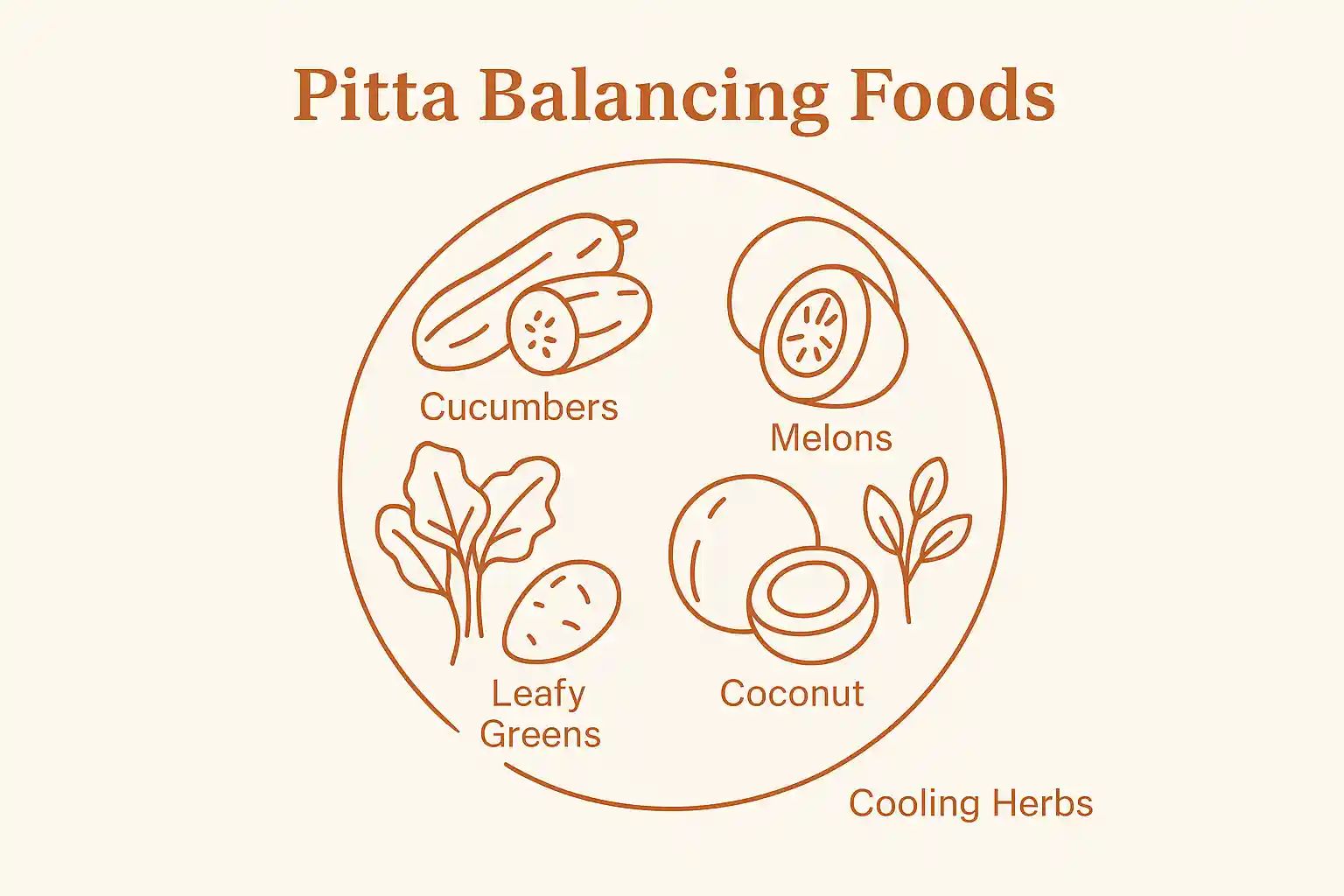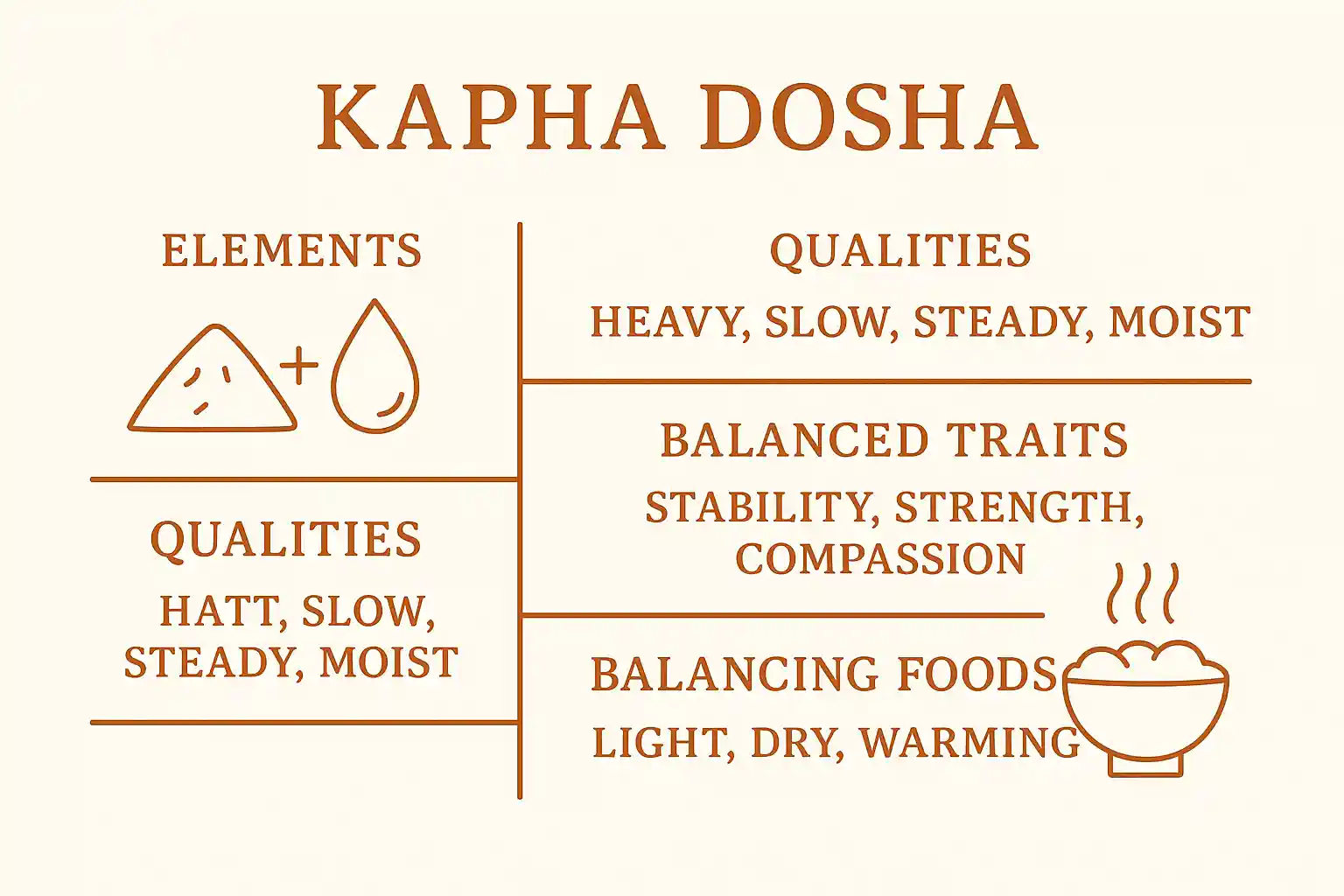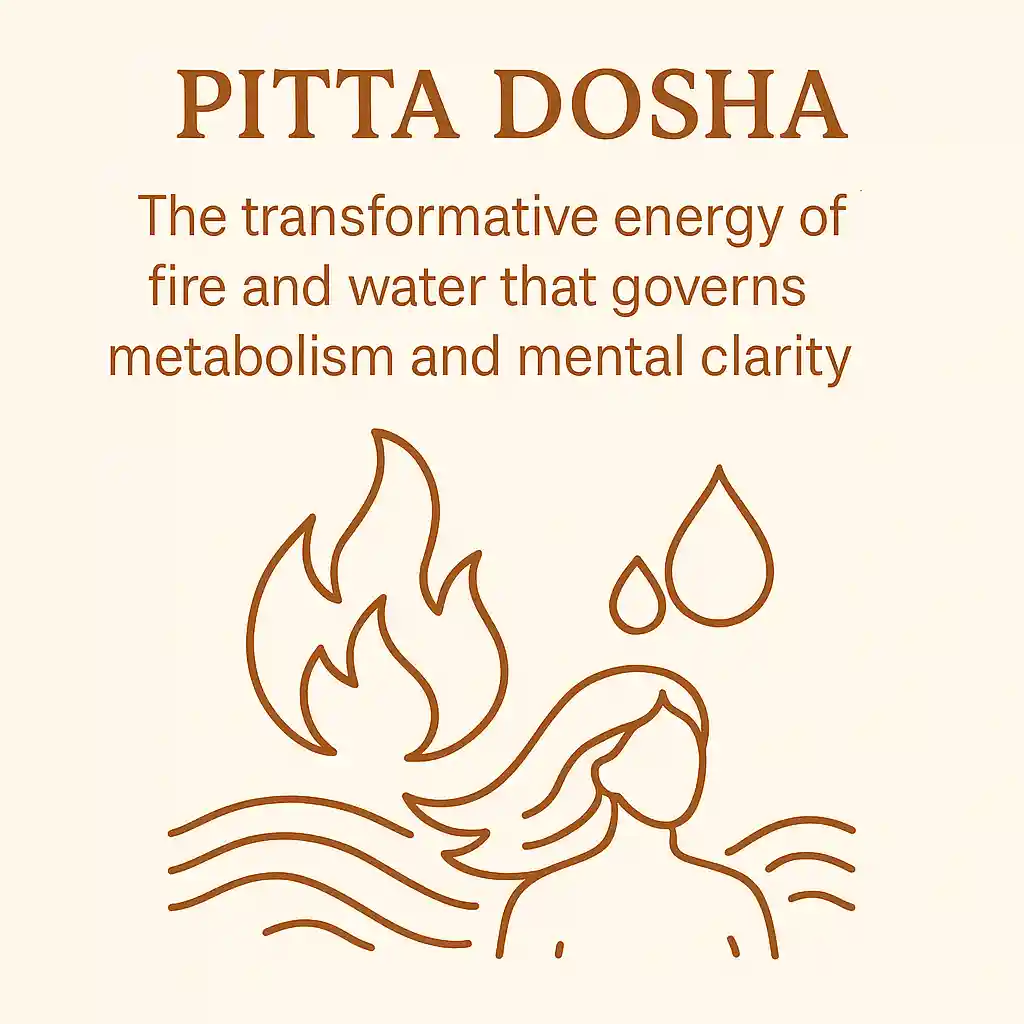Pitta Dosha is composed of the elements fire and water, and is the energy of transformation in the body. It governs metabolism, digestion, temperature regulation, and mental sharpness. Pitta provides heat, clarity, and focus when in balance—but it can quickly become intense, sharp, and reactive when aggravated. Unlike the grounding energy of Kapha Dosha or the mobile nature of Vata Dosha, Pitta is the transformative force that processes and metabolizes—a function that can be challenged during travel and environmental changes.
If you're new to Ayurveda, you might want to start with our comprehensive guide on Understanding the Three Doshas to learn how Pitta fits into the broader framework of Ayurvedic constitutional types.
Physically, Pitta types tend to have a medium build, strong digestion, and a warm body temperature. Mentally and emotionally, they're known for ambition, intensity, and determination—but they may also struggle with irritability, impatience, and inflammatory conditions when out of balance.
Key Characteristics of Pitta Dosha
Mental Traits of Pitta
- Sharp intellect and strong focus - Pitta types excel at analysis and problem-solving
- Natural leaders - Confident, articulate, and inspiring to others
- Goal-oriented and ambitious - Driven to achieve and transform ideas into reality
- Prone to anger and impatience - When stressed, can become critical and reactive
Physical Traits of Pitta
- Medium build and muscular frame - Well-proportioned with good muscle tone
- Warm body temperature - Often feel hot or sweat easily
- Strong appetite and thirst - Regular eating patterns and robust digestion
- Oily skin - May be prone to acne, rashes, or inflammatory skin conditions
- Light sensitivity - May have red or inflamed eyes, sensitive to bright lights

Common Signs of Pitta Imbalance
When Pitta becomes excessive in the mind or body, it shows up as:
Physical Signs
- Heartburn, acid reflux, or inflammation
- Skin rashes, acne, or excess sweating
- Redness in eyes, face, or skin
- Diarrhea or loose stools
- Excess heat or intolerance to hot weather
Mental/Emotional Signs
- Irritability, anger, or short temper
- Perfectionism and controlling tendencies
- Frustration when things don't go as planned
- Criticism of self and others
- Impatience with delays or inefficiency
Long-term Pitta imbalance can contribute to burnout, inflammatory disorders, ulcers, high blood pressure, and chronic tension.
What Aggravates Pitta Dosha?
Pitta is increased by heat, intensity, and overstimulation—both in diet and lifestyle. Common aggravators include:
- Environmental factors: Hot weather, working under direct sunlight, or heated environments
- Dietary triggers: Spicy, salty, oily, or fried foods
- Substances: Alcohol, caffeine, and fermented foods
- Lifestyle patterns: Competitive environments, overworking, and high-pressure situations
- Mental habits: Excess screen time, constant stimulation, suppressed emotions, or harsh self-criticism
How to Balance Pitta Dosha
Balancing Pitta means cultivating the opposite qualities: cool, calm, gentle, and soothing.
| Category | Pitta-Increasing (Avoid) | Pitta-Balancing (Favor) |
|---|---|---|
| Food Temperature | Hot, spicy, fermented, heated foods | Cool, room temperature, fresh foods |
| Food Qualities | Oily, salty, pungent, acidic foods | Sweet, bitter, astringent, mild foods |
| Meal Timing | Skipping meals, eating when angry | Regular meals, eating in peaceful state |
| Favorable Tastes | Excessive sour, salty, pungent | Sweet, bitter, astringent tastes |
| Vegetables | Tomatoes, onions, hot peppers, radishes | Leafy greens, cucumbers, zucchini, sweet potatoes |
| Fruits | Sour citrus, cranberries, unripe fruits | Sweet melons, grapes, pears, coconut |
| Proteins | Red meat, seafood, aged cheese | Tofu, fresh cheese, milk, small amounts of chicken |
| Beverages | Alcohol, coffee, hot spicy teas | Cool water, herbal teas, fresh juices |
| Activities | Intense competition, overworking, heat exposure | Gentle exercise, swimming, creative activities |
| Environment | Hot, bright, overstimulating conditions | Cool, shaded, peaceful environments |
Cooling Foods for Pitta
Choose foods that are:
- Cooling and mildly sweet or bitter
- Light and hydrating with high water content
- Mildly spiced, not overly pungent or salty
Best Foods for Pitta
- Vegetables: Leafy greens, cucumbers, zucchini, sweet potato
- Fruits: Sweet fruits like melons, pears, mangoes, grapes
- Grains: Barley, rice, oats, quinoa
- Dairy: Cool milk, ghee, coconut milk, fresh cheese
- Herbs: Cilantro, mint, fennel, coriander, cardamom
Foods to Avoid
- Spicy foods: Chilies, hot peppers, excess garlic
- Acidic foods: Tomatoes, vinegar, citrus (in excess)
- Fermented items: Aged cheeses, wine, pickles
- Heavy foods: Red meat, fried foods, excessive oils
- Stimulants: Alcohol, caffeine, energy drinks

Ideal Daily Routine for Pitta
- Morning: Wake by 6 a.m. and avoid mid-day sun exposure
- Exercise: Practice gentle yoga, walking, or swimming
- Breathing: Include cooling breathwork like Sheetali pranayama
- Meals: Eat regular meals with plenty of cooling hydration
- Work: Prioritize self-compassion and non-competitive settings
- Evening: Unwind with music, nature, and relaxation at night
Lifestyle Tips to Calm Pitta
- Spend time in nature, especially near water
- Diffuse calming essential oils (rose, sandalwood, lavender)
- Wear light, breathable clothing in natural fibers
- Surround yourself with cooling colors—blues, greens, whites
- Engage in creative hobbies without pressure or goals
- Use moonlight and lunar cycles as gentle guides
Pitta Dosha and Seasonal Changes
Pitta dominates during summer or hot climates. During this time:
- Limit exposure to direct heat or spicy foods
- Emphasize hydration and raw/cooked cooling foods
- Avoid overworking or overexercising
- Take breaks, go slow, and connect with nature
This is a crucial period for prevention—many people develop imbalances in summer that carry into fall.
Frequently Asked Questions About Pitta Dosha
It means you have strong digestive fire, leadership qualities, and mental precision—but also need to manage stress, anger, and overheating to stay balanced. Pitta types are natural transformers who excel at turning ideas into reality.
Anger, impatience, acid reflux, skin rashes, loose stools, and intolerance to heat are common signs. You might also notice increased criticism, perfectionism, and frustration when things don't go according to plan.
Favor cooling, hydrating, mildly spiced meals. Include sweet fruits, leafy greens, rice, and coconut. Avoid hot, spicy, and acidic foods. Focus on regular meal times and adequate hydration.
You can notice relief in a few days with consistent cooling practices, but full balance may take a few weeks depending on severity. The key is consistency with cooling foods, stress management, and avoiding Pitta-aggravating factors.
Yes, dual types (e.g., Pitta-Vata or Pitta-Kapha) are common. Your dominant Dosha may vary by season, stress levels, or lifestyle. Understanding your unique constitution helps you make better choices for your health.
Final Thoughts on Pitta Dosha
Pitta is the Dosha of passion, intelligence, and transformation. When balanced, it brings clarity, courage, and focus. But when overheated, it can ignite inner fires of anger, inflammation, and burnout.
Embrace cooling foods, calming routines, and emotional spaciousness to stay centered and clear. Ayurveda offers a path not just to symptom relief—but to a deeper, more peaceful relationship with your natural intensity.
Ready to Balance Your Pitta?
Start your personalized Ayurvedic journey today
Related Articles

What Is Agni? A Beginner's Guide to Ayurvedic Digestive Fire
Discover Agni, the vital digestive fire in Ayurveda that transforms food into energy and health. Learn the 4 types of Agni, signs of imbalance, and practical ways to strengthen your digestive fire naturally.
12 min read
Understanding Kapha Dosha: The Foundation of Strength and Stability
Discover Kapha Dosha, the grounding force of Earth and Water elements. Learn how this vital energy provides structure, immunity, and emotional stability—and how to keep it balanced.
8 min read
